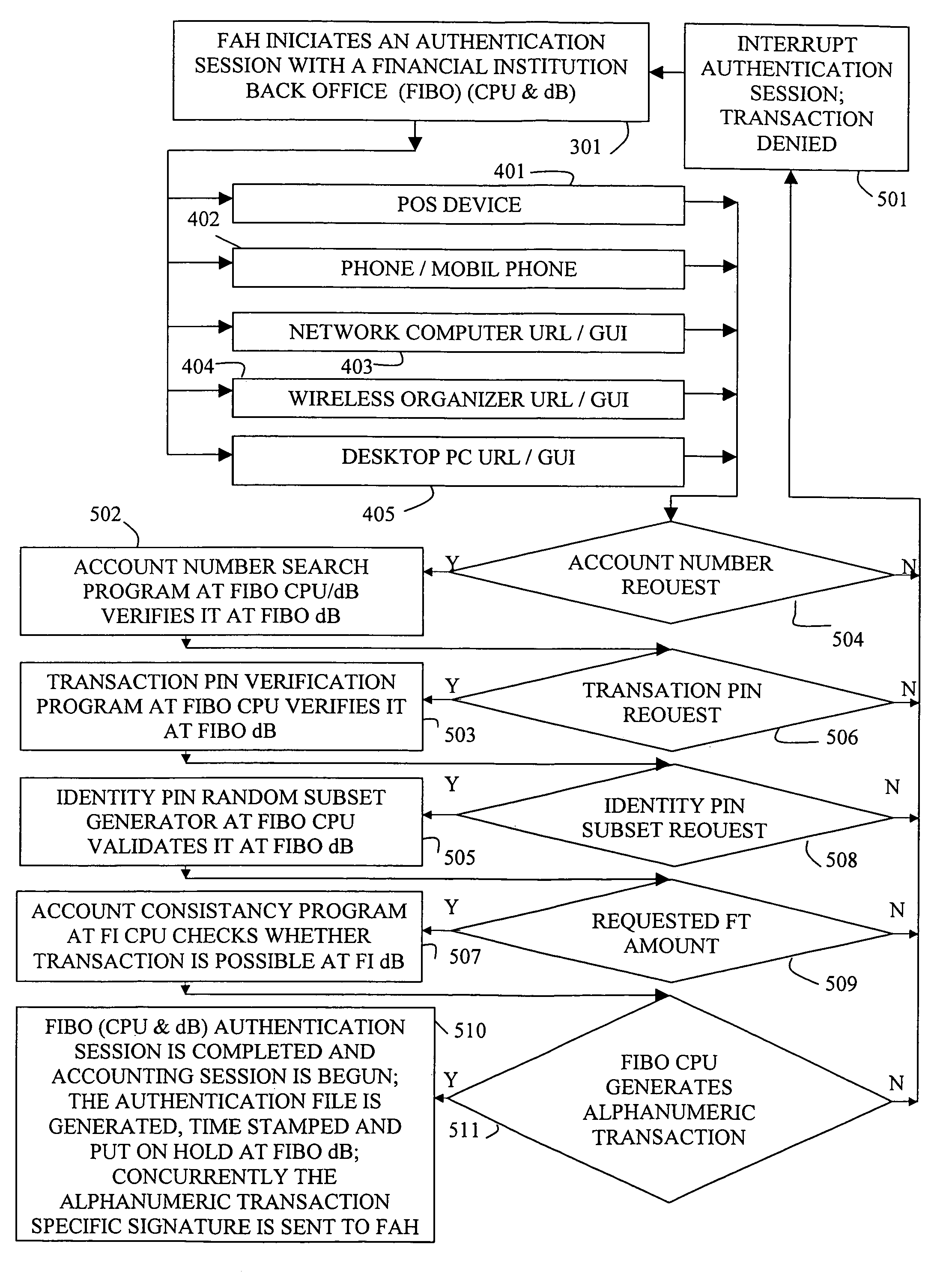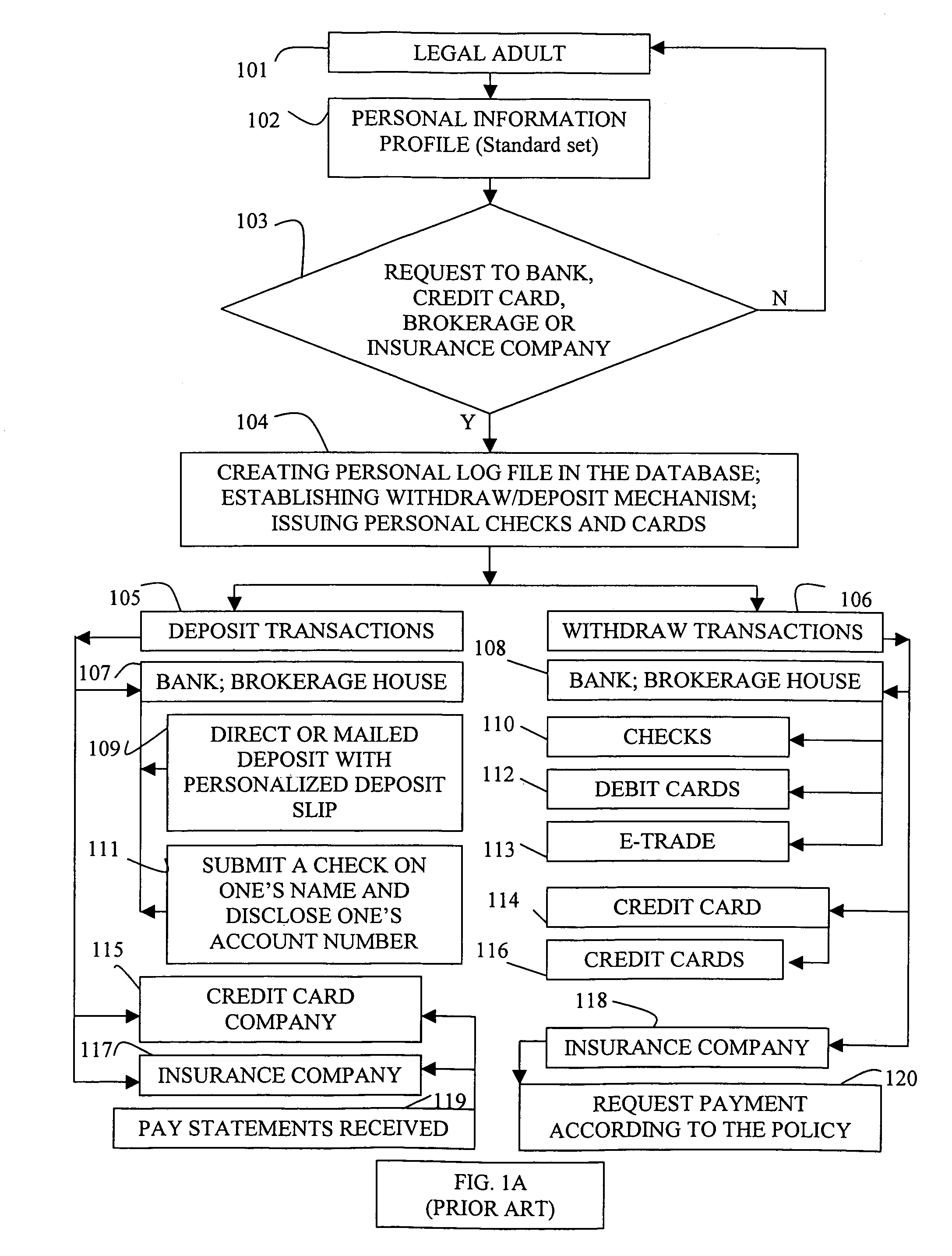There are companies violating
consumer privacy by gathering, sorting, researching and selling
for profit personal information about consumers acquired during financial transactions.
Another new requirement is associated with the fact that hackers and intruders may get illegal access to the
computer network and compromise financial transactions.
Due to weaknesses in the authentication stage in financial transactions with credit cards, consumers have suffered significant losses.
This operation is error prone when identifying faked signatures in fraudulent actions.
Another typical malfunction at the authentication stage of
credit card transactions occurs when someone gets a
credit card account number and a copy of the card owner's signature.
Another example in which financial institutions incur losses arises when account holders change their minds after concluding a
financial transaction.
Mistakes in authenticating fraudulent actors are often followed by successful
authorization and accounting sessions at financial institution back offices, illustrating another
weakness of the prior art
financial transaction architecture.
Though credit cards have been used as a
financial transaction instrument since the beginning of electronic commerce, there are a number of issues in the electronic commerce architecture that have become apparent.
Another issue jeopardizing financial transactions in electronic commerce is
weakness of the authorization stage in credit card transactions.
A number of fraudulent sell transactions may happen before the account holder regains control on his / her account after it has been breached.
Though both Colbert and Checchio improve security against fraudulent usage of credit cards for certain types of transactions, there are limitations to be addressed.
Frequent usage of a pair of static numbers (account numbers and PINs) over phone lines is insecure due to leaks at the line entries and on the lines themselves.
This insecure communication line issue gets aggravated, if one would like to replace phone lines by
wireless or
the Internet communication lines.
Another
weakness common to both patents is lack of technology enabling the back office to
handle the proposed architectural changes for large numbers of financial transactions.
This requirement for authorization is an additional limitation in both Colbert and Checchio, narrowing down the types of possible financial transactions and the locations from which they can be performed.
There is a public concern that financial transactions with credit cards in electronic commerce channels and in other traditional channels could lead to personal information about the
consumer being accessed, monitored, tracked, stolen and fraudulently used or sold
for profit without the consumers' approval.
Privacy related problems arc exacerbated with the advanced Internet related technologies due to the ease with which information can be collected, processed and combined with other information.
It is not only financial transactions with credit cards that raise numerous privacy issues.
More often than not, withdraw and deposit transactions at a
bank require an account holder to reveal identification documents This requirement to reveal personal identification documents is a privacy related inconvenience justified by the current authentication process for such financial transactions.
1) Direct and urgent deposit transactions can be hindered, if the account holder is located far away from the
bank and its branches where the account resides. It should be possible to deposit to one's account via other financial institutions, without disclosing personal information at intermediate service levels in other financial institutions.
2) During depositing,
bank tellers get access to the personal information of the account holder. There are two issues here.
Firstly, a teller can make mistakes altering personal and account balance information without any immediate back office computer and
database control. In other words, each deposit transaction has a probability of mistakes, hurting the bank and the account holder.
Secondly, the account holder may not like a
bank teller to have access to his / her personal information file during a
direct deposit transaction. At this stage it would be beneficial, if the account holder could decide by himself / herself whether this privilege should be given to the
bank teller.
3) Insufficient theft and fraud protection during withdrawal transactions with checks, credit, charge and debit cards or during electronic commerce financial transactions.
4) Personal information is not protected and often intentionally or unintentionally misused by a party at the
point of sale or bank tellers during withdrawal transactions.
Though cash is handy for low value financial transactions, it is usually impractical for the bulk of financial transactions due to low cash amounts on hand.
1) The authentication stage is de-coupled from the back office CPU and dB, making it subjective, embarrassing, and error and fraud prone.
2) The authorization stage is de-coupled from account holder for both on and off line financial transactions, making it especially dangerous for on line financial transactions (for example, due to on line financial transaction latency, a number of unauthorized financial transactions may happen before the account holder regains control on the account).
3) Personal information leaks are possible on
the Internet communication lines during electronic commerce sessions (browsing technology, TCP / IP protocols, PKI, SSL and other Internet technologies do not guarantee sufficient financial
transaction security).
4) The accounting stage is de-coupled from the account holder, potentially causing inconvenience during a series of buy and sell financial transactions.
5) A party at the
point of sale may collect and analyze personal information about the account holder, and market and sell the information for profit. This leaves the public at large unaware of the privacy and
confidentiality status of the data.
Present on line and off line financial transaction architectures have substantial security and privacy deficiencies at the authentication, authorization and accounting stages.
 Login to View More
Login to View More  Login to View More
Login to View More 


